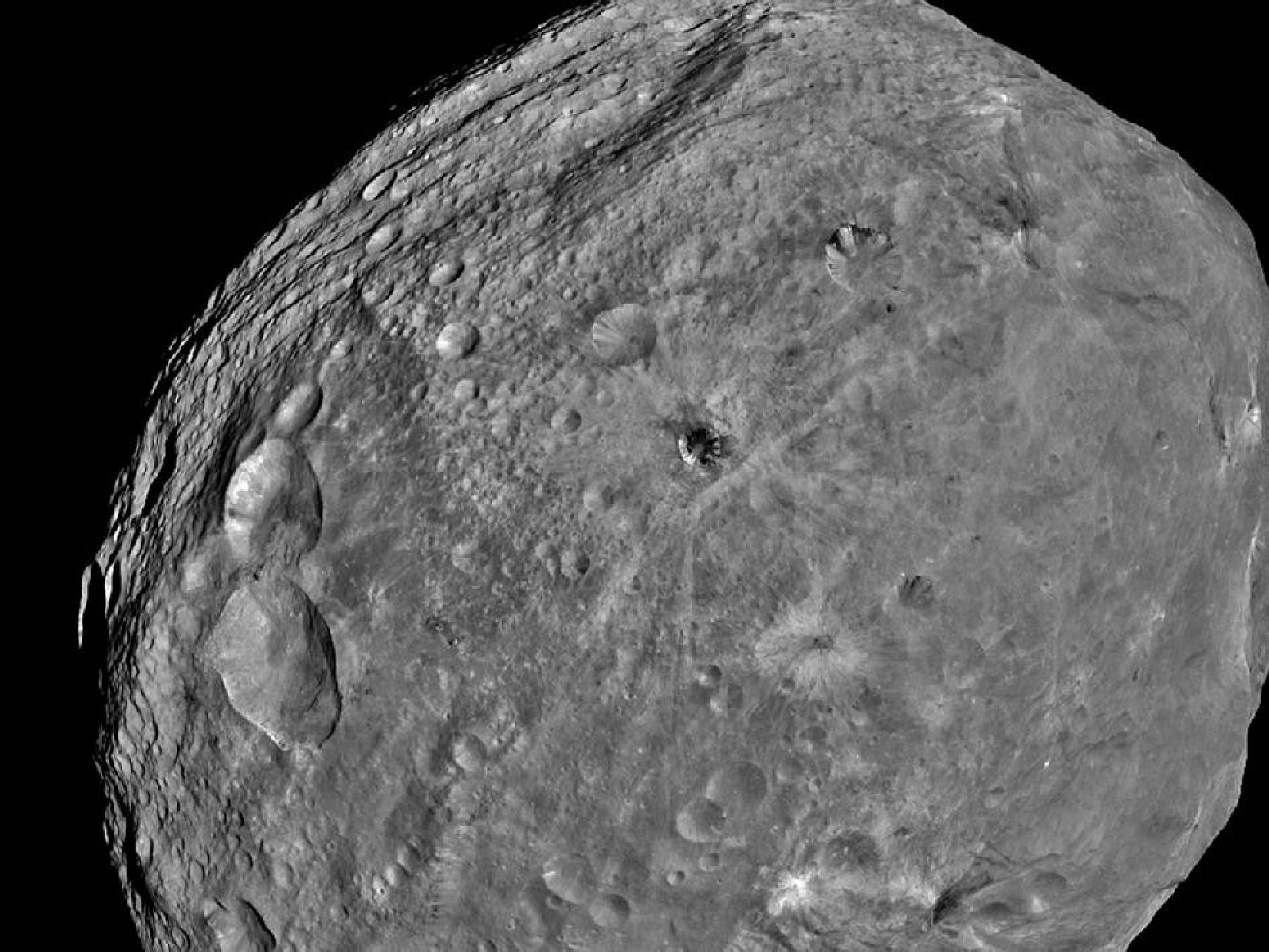NASA?s Dawn Gets Clear Images of Vesta (IMAGES)
NASA's Dawn spacecraft has delivered more clarity on the Vesta asteroid as it took the first full frame image.
The spacecraft is the first ever to orbit a main asteroid belt and is continuing on its mission to gain scientific information on the Vesta asteroid. Scientists think information on Vesta can help them determine about the early formation of the solar system and galaxy. Dawn entered Vesta's orbit on July 16th after a four year, 1.7 billion mile journey to get there. The asteroid lies in the main belt between the orbits of Mars and Jupiter.
On July 24, Dawn took the first full-frame image of Vesta. The image was taken a distance of 3,200 miles (5,200 kilometers) away. The image was taken from Dawn's framing camera and used for navigation purposes. The real images for scientific analysis will be taken later when Dawn commences on the first of four intensive science orbits on August 11.
"Now that we are in orbit around one of the last unexplored worlds in the inner solar system, we can see that it's a unique and fascinating place," said Marc Rayman, Dawn's chief engineer and mission manager at NASA's Jet Propulsion Laboratory in Pasadena, Calif.
Currently, Dawn sits 1,800 miles (2,900 kilometers) from the asteroid. The asteroid and Dawn are roughly 114 million miles (184 million kilometers) away from Earth. While the images haven't provided scientific analysis, they do confirm certain things scientists have known.
"We have been calling Vesta the smallest terrestrial planet," said Chris Russell, Dawn's principal investigator at UCLA. "The latest imagery provides much justification for our expectations. They show that a variety of processes were once at work on the surface of Vesta and provide extensive evidence for Vesta's planetary aspirations."
Once Dawn is finished with Vesta it will launch for its second mission where it will head to the dwarf planet Ceres. Like the asteroid Vesta, Ceres will be able to help scientists understand the early formations of the solar system.
"By studying both these two distinct bodies with the same complement of instruments on the same spacecraft, the Dawn mission hopes to compare the different evolutionary path each took as well as create a picture of the early solar system overall," NASA said on its Dawn website.
Once it does this, it will become the first spacecraft to orbit two solar system destinations beyond Earth. Dawn will eventually be finished with its mission in 2017.
Follow Gabriel Perna on Twitter at @GabrielSPerna



© Copyright IBTimes 2025. All rights reserved.





















